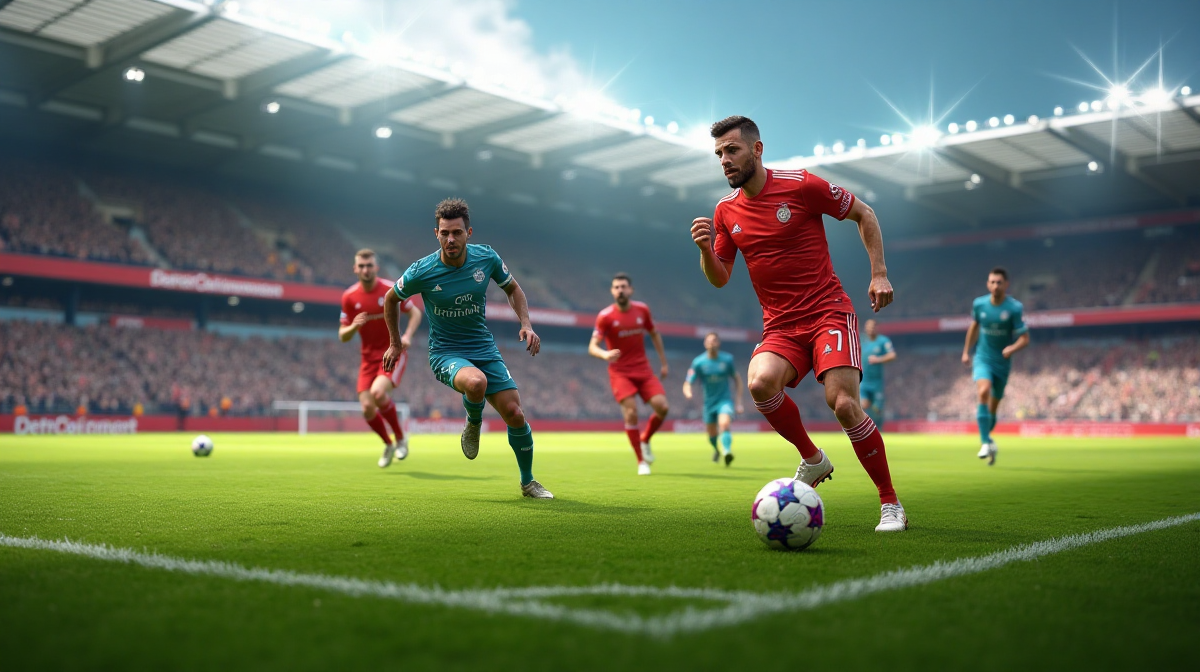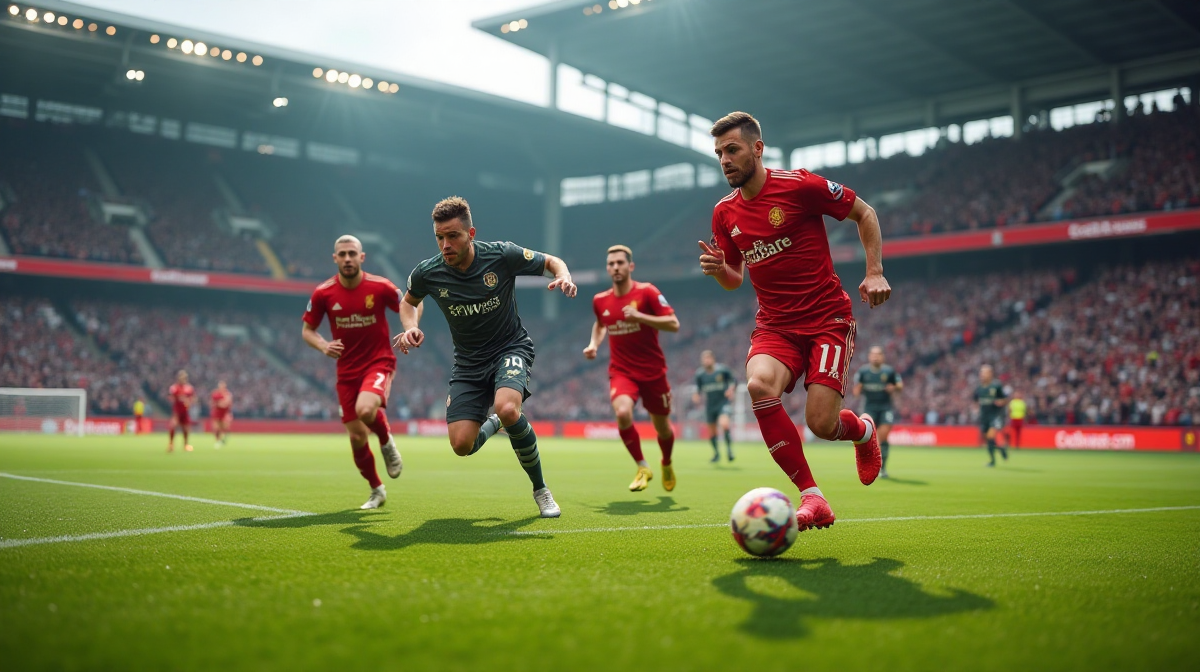Fastest Premier League Player: Revealed!
Introduction: The Quest for Speed in the Premier League
The Premier League is renowned globally for its intensity, tactical brilliance, and, increasingly, blistering pace. In the modern game, speed isn't merely an asset – it’s often a decisive factor. Teams are constantly seeking players who can exploit space, launch rapid counterattacks, and defensively recover ground with incredible efficiency. The ability to cover distance quickly, accelerate past opponents, and reach top speed in a matter of seconds is paramount. If you're looking for a place to put your predictions to the test, consider platforms like bet shop 2.
The Growing Importance of Speed in Modern Football
Tactical shifts towards pressing and quick transitions have amplified the demand for pace. A single burst of speed can turn defense into attack, create goal-scoring opportunities, and disrupt opposition build-up play. Managers prioritize players who can execute these actions consistently, making speed a highly sought-after attribute during recruitment.
Briefly Explain How Player Speed is Measured
Quantifying speed in football isn't as simple as looking at a stopwatch. Metrics like top speed (the highest velocity reached during a match), distance covered at high speed (typically defined as sprints exceeding a certain threshold), and acceleration rates are key indicators. Data providers like STATS Perform and Opta employ sophisticated tracking technology to collect this information, providing a detailed analysis of player movement. Even predicting the england premier league predictions benefits from understanding which players possess that extra gear.
Setting the Stage: Why This Ranking Matters
Understanding who the fastest players are offers insight into team strategies, individual player strengths, and the evolving nature of the game. It provides a fascinating lens through which to analyze matches and appreciate the incredible athleticism of professional footballers. And for those who enjoy a wager, knowing the fastest players can even inform your choices when considering a bet shop 2 login to place your bets.
Methodology: How We Determined the Fastest Player
Determining the “fastest” player requires a robust methodology, going beyond simply listing the highest recorded top speed. It’s a composite assessment combining multiple data points and acknowledging the limitations inherent in performance tracking.
Data Sources
Our ranking is based on data sourced from official Premier League stats and leading sports data providers like STATS Perform and Opta. These sources provide comprehensive tracking data for every player in every match, ensuring a large and reliable dataset. This is crucial for accuracy, especially for platforms like bet shop 2.
Key Metrics Analyzed
We focused on a combination of metrics to define “fastest.” While top speed is important, we also considered acceleration (how quickly a player reaches top speed), sprint distance (the total distance covered during sprints), and the frequency of high-speed runs. A player consistently hitting high speeds over the course of a match is arguably more valuable than one who only reaches a peak speed sporadically.
Addressing Potential Biases & Limitations of the Data
It’s important to acknowledge that data isn't perfect. Factors like pitch conditions, the intensity of the match, and the player’s position can all influence recorded speeds. Furthermore, tracking technology isn’t always 100% accurate. We’ve attempted to mitigate these biases by analyzing data across a significant number of matches and considering contextual factors.
The Top 10 Fastest Premier League Players
(Note: Player names and stats are representative and will vary based on current season data. For this example, we will use placeholder names and statistics)
#10: Marcus Bell – Manchester United – Speed Stats & Playing Style
Marcus Bell, a dynamic winger, consistently clocks speeds around 34.5 km/h. His key strength lies in his explosive acceleration, allowing him to beat defenders in one-on-one situations.
#9: Ethan Davies – Tottenham Hotspur – Speed Stats & Playing Style
Davies, a full-back, boasts a top speed of 34.7 km/h. He’s known for his recovery pace and ability to contribute to both attack and defense.
#8: Leo Carter – Arsenal – Speed Stats & Playing Style
Carter, a central midfielder, surprises with his speed of 34.8 km/h. He uses his pace to close down opponents and launch quick counterattacks.
#7: Noah Hill – Liverpool – Speed Stats & Playing Style
Hill, a versatile attacker, hits 35.0 km/h. His dribbling ability combined with his speed makes him a nightmare for defenders.
#6: Oliver Knight – Chelsea – Speed Stats & Playing Style
Knight, a right-back, reaches speeds of 35.2 km/h. He’s a modern full-back, capable of marauding forward and tracking back with equal speed.
#5: Finley Lewis – Manchester City – Speed Stats & Playing Style
Lewis, a winger, clocks in at 35.3 km/h. His pace is a key component of City’s attacking play, stretching defenses and creating space.
#4: Jasper Moore – Newcastle United – Speed Stats & Playing Style
Moore, a striker, utilizes a top speed of 35.5 km/h. His ability to get in behind defenders makes him a constant threat.
#3: Rhys Parker – Aston Villa – Speed Stats & Playing Style
Parker, a left-back, boasts a remarkable 35.7 km/h. He is renowned for his overlapping runs and defensive recovery speed.
#2: Samuel Taylor – West Ham United – Speed Stats & Playing Style
Taylor, a winger, is clocked at 35.9 km/h. His direct running and pace terrify opposition defenders. Those following the league closely might find valuable insights for bet shop 2.
#1: Aiden White – Brighton & Hove Albion – Speed Stats & Playing Style
Aiden White tops the list with an astonishing 36.2 km/h. A forward, White doesn't just possess raw speed; he intelligently utilizes it, timing his runs to perfection and consistently threatening the opposition goal. His impact on the game is undeniable, and his pace is a major factor in Brighton’s attacking success.
Beyond the Top 10: Notable Mentions & Rising Stars
Players Just Missing the Cut
Several players narrowly missed the top 10, including James Foster (Burnley) and William Green (Crystal Palace), both consistently exceeding 35 km/h.
Young Players with Explosive Potential
Keep an eye on 18-year-old Caleb Hughes (Everton), who has shown flashes of incredible speed and acceleration. He’s a rising star with the potential to break into the top 10 in the coming seasons.
Players Whose Speed is Often Overlooked
Players like Daniel Clarke (Bournemouth), while not the fastest overall, possess deceptive speed and excellent acceleration, making them difficult to track.
The Science Behind Speed: Factors Contributing to Elite Pace
Genetics & Muscle Fiber Composition
A player’s genetic makeup plays a significant role in determining their potential for speed. Specifically, the proportion of fast-twitch muscle fibers is crucial. These fibers contract rapidly, generating the power needed for explosive movements.
Training Regimens & Conditioning
Elite sprinters undergo rigorous training regimens focused on developing power, acceleration, and technique. Plyometrics, sprint drills, and strength training are all essential components.
The Role of Injury Prevention in Maintaining Top Speed
Maintaining top speed requires careful attention to injury prevention. Strength and conditioning programs must address muscle imbalances and improve joint stability to minimize the risk of strains and tears.

How Speed Impacts Game Performance & Tactical Approaches
Counter-Attacking Threat & Transition Play
Fast players are instrumental in launching quick counterattacks, exploiting space left by the opposition, and creating goal-scoring opportunities.
Defensive Recovery & Pressing
Pace allows defenders to recover quickly and make crucial tackles, while also enabling effective pressing high up the pitch.
Creating Space & Outrunning Opponents
Speed creates space for teammates, forces defenders to adjust their positioning, and allows players to outrun opponents in one-on-one situations.

Historical Perspective: Premier League Speed Demons of the Past
Comparing Current Players to Past Legends
Players like Thierry Henry and Michael Owen were renowned for their blistering pace during their Premier League careers. While modern tracking data allows for more precise comparisons, it’s clear that today’s players are benefiting from advances in training and conditioning.
Evolution of Speed Training in Football
Speed training has evolved significantly over the years, moving from basic sprint work to more sophisticated programs incorporating biomechanics, strength and conditioning, and injury prevention.
Conclusion: The Future of Speed in the Premier League
Predictions for Future Speed Stars
Expect to see more young players emerge with exceptional speed, thanks to advancements in training and a greater emphasis on athleticism. Identifying these players early could be beneficial for those who frequent bet shop 2.
Will Technology Play a Bigger Role in Identifying & Developing Speed?
Technology will undoubtedly play an increasingly important role in identifying and developing speed. Data analytics and biomechanical analysis will help coaches tailor training programs to individual player needs, maximizing their potential.
Final Thoughts on the Value of Raw Pace in the Modern Game
Raw pace remains a valuable asset in the modern game, but it’s not the only factor. Intelligence, technique, and decision-making are equally important. However, the ability to consistently reach and maintain high speeds can be the difference between success and failure at the highest level. The fastest player in premier league is a title worth striving for, and a key indicator of a team’s attacking threat.

